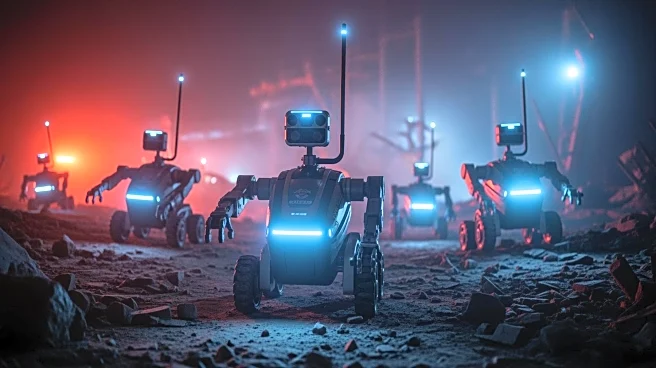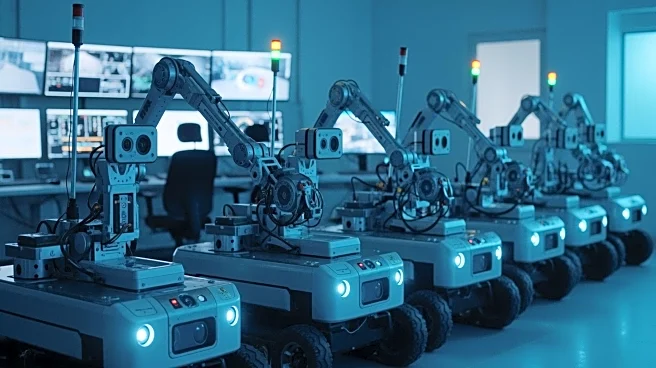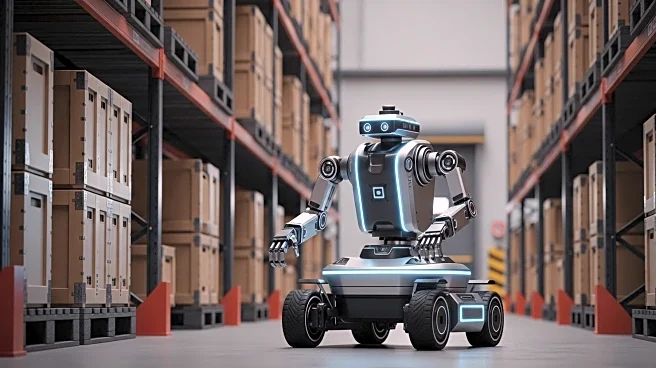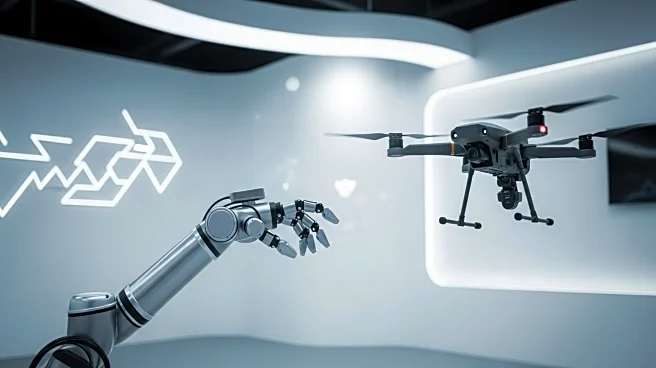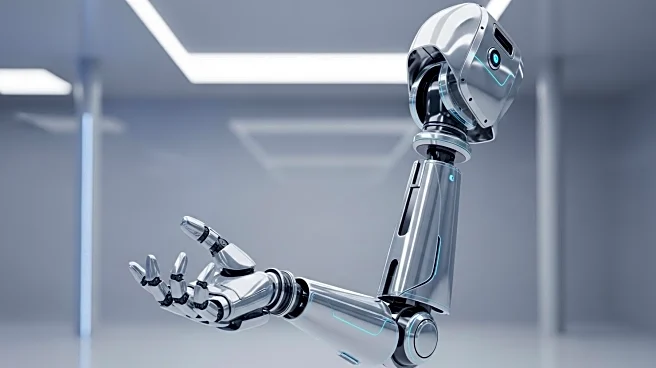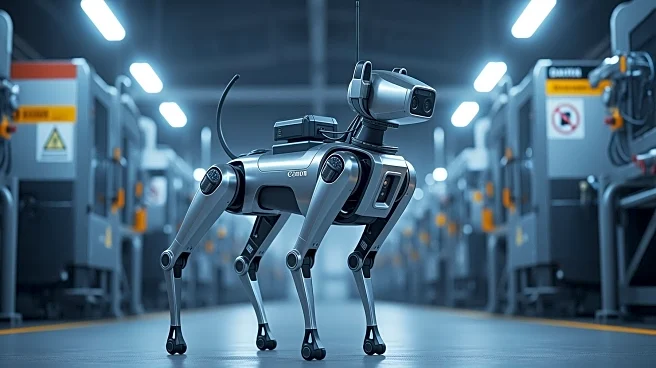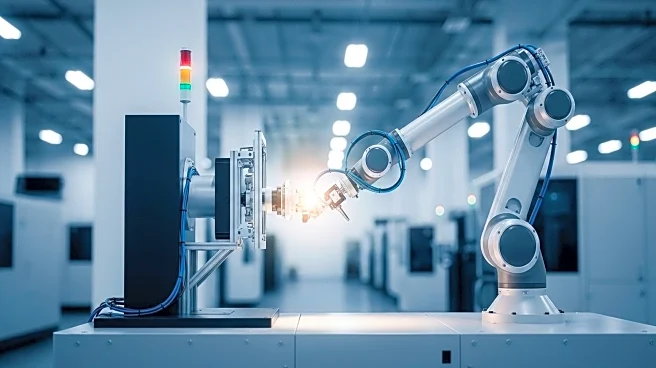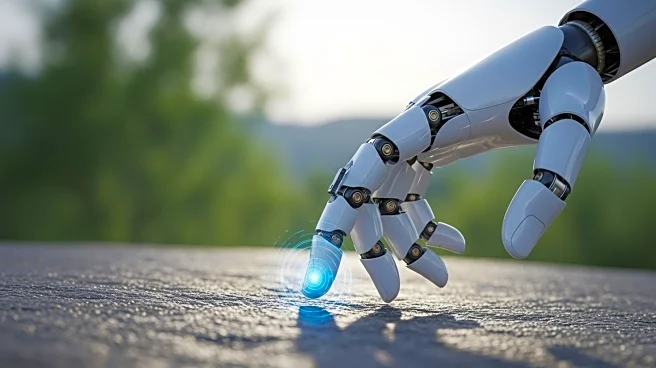What's Happening?
Researchers have developed a new control system that significantly improves the ability of autonomous rescue robots to navigate disaster zones. The system combines a heuristic motion planner with tube-based
model predictive control, allowing robots to safely and efficiently maneuver through dynamic, cluttered environments. This unified, stateless framework does not rely on past data, instead using real-time environmental perception to make decisions. The system outperformed existing algorithms by up to 42.3% in safety and efficiency during simulations.
Why It's Important?
The advancement in rescue robot technology has the potential to revolutionize disaster response efforts. By enabling robots to navigate complex environments autonomously, the system reduces human exposure to dangerous conditions and enhances the efficiency of search and rescue operations. This development could lead to faster, more effective responses in disaster scenarios, ultimately saving lives and resources. The technology also sets a new standard for autonomous systems, emphasizing safety and reliability in unpredictable environments.
What's Next?
The research team plans to further refine the control system, potentially incorporating memory-augmented approaches for enhanced robustness. As the technology progresses, it may be deployed in real-world disaster zones, providing valuable data and insights for future improvements. Collaboration with industry partners could accelerate the development and deployment of rescue robots, expanding their capabilities and applications.
Beyond the Headlines
The development of this control system raises important ethical and practical considerations regarding the use of autonomous robots in disaster response. Ensuring the reliability and safety of these systems is crucial, as they operate in high-stakes environments. The technology also prompts discussions on the role of automation in emergency services and the potential for robots to complement human efforts in life-saving missions.
